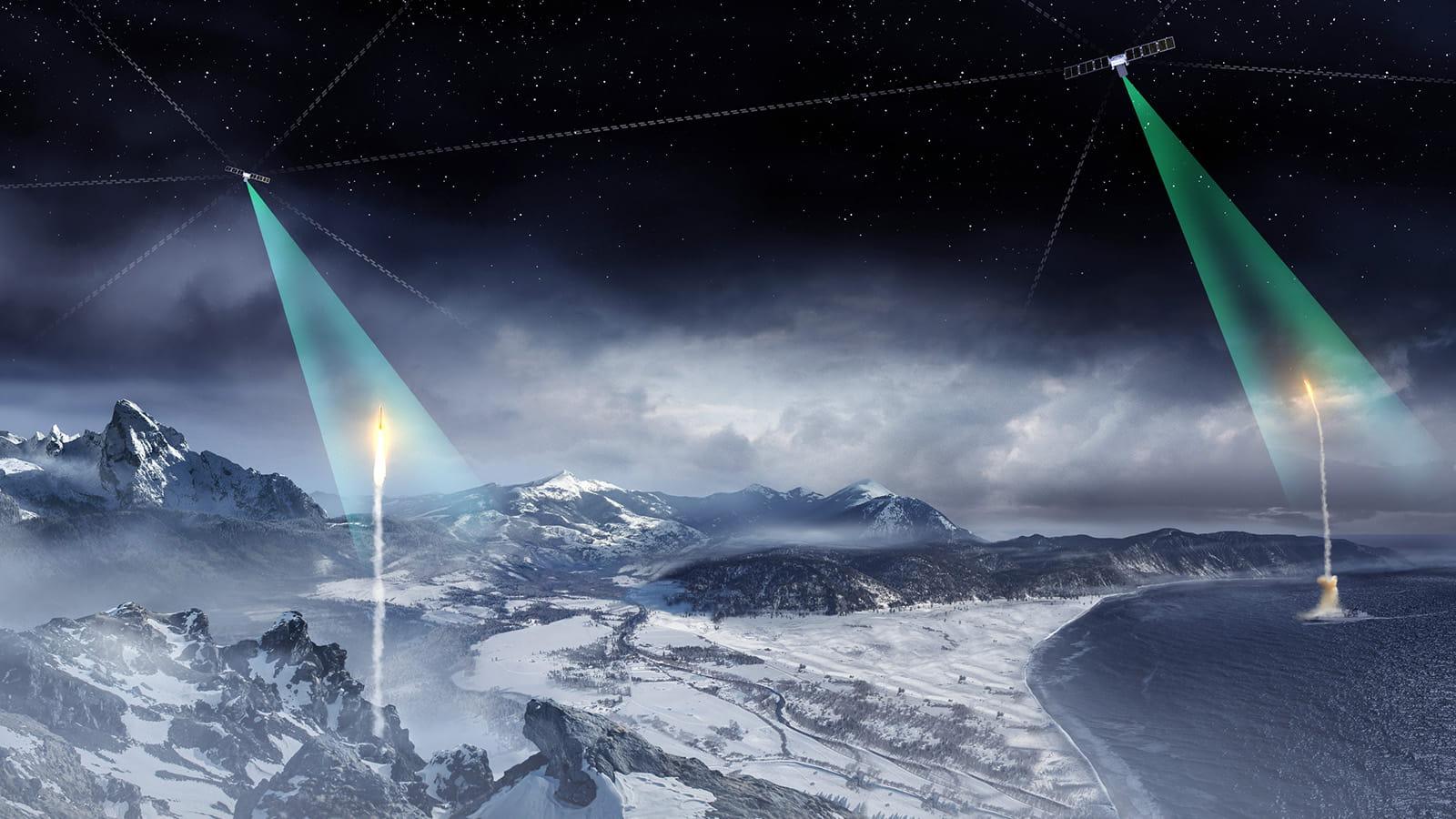
SDA’s Tranche 0 is a minimal viable product intended to demonstrate the functionality of the larger constellation.
The U.S. Space Development Agency (SDA) plans to launch its first batch of satellites, Tranche 0, before the end of March from Vandenberg Space Force Base in California.
The launch, aboard a SpaceX rocket, will include Tracking Layer or Transport Layer satellites—possibly both—though the manifest has yet to be finalized, said Frank Turner, technical director for the SDA, speaking March 14 at the Satellite 2023 conference in Washington.
“I do not know what is manifesting,” he says. “Things are going really fast.”
The Proliferated Warfighter Space Architecture consist of seven different “layers”—types of satellites performing tasks such as communications, missile warning, missile tracking, Earth observation and navigation.
The agency’s Tracking Layer satellites are designed to spot and track hypersonic and ballistic missile launches. The transport layer is a mesh network of laser-linked satellites in low Earth orbit that are to connect to other satellites in SDA’s Proliferated Warfighter Space Architecture, an in-development constellation of satellites.
The spacecraft are to be interlinked using the Transport Layer’s laser communications systems—for example, enabling a Tracking Layer missile spotting satellite to quickly relay its observations to a communications satellite, which would then pass on information to ground systems.
Tranche 0 is designed as a minimal viable product version of the Proliferated Warfighter Space Architecture, an attempt to demonstrate the basic functionality of the constellation. There are 20 transport satellites and eight tracking satellites in Tranche 0.
SDA became part of the U.S. Space Force in October after operating as an independent agency within the U.S. Defense Department since its founding in 2019. Tranche 0 contracts were awarded in 2020 and SDA had planned to launch the initial vehicles in September and then December, but was delayed both times.
Turner says the coronavirus pandemic and subsequent fallout within manufacturers’ supply chains caused the delays.
“We looked at various and sundry opportunities [to speed up time to launch]. As an example, one of our primes building some of our [Tranche 0] Transport satellites loaned parts to the other prime building the satellites so that they could make launch and get on the first mission,” he says. “We did all kinds of weird things to try to get around the whole supply chain issue. But at the end of the day, we just couldn’t be there.”
SDA says the 28 Tranche 0 satellites are likely to be sent to orbit on two launch vehicles. A second launch has not been announced.
